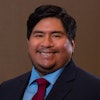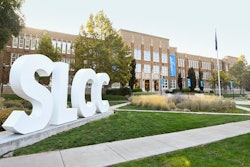For Leonard Dauphinais, one of the most challenging things about running a tribal college is not a lack of federal funding but trying to figure out when that funding will arrive at his school.
“Like everyone else our challenges during this economic downturn are significant,” says Dauphinais, who is the acting president of Turtle Mountain Community College in Balcourt, North Dakota.
“We’re still up and operating – so that’s the good news,” continues Dauphinais, “but trying to get our federal funding in a timely manner has been an ongoing issue for us.”
That’s because for years the money that the nation’s tribal colleges have received through the Bureau of Indian Affairs arrives only after Congress has signed off on a new fiscal year budget, a process that oftentimes takes months.
“The fact is that we are dependent upon this kind of funding and need it to pay our bills,” remarks Michael Parish, the president of Bay Mills Community College in Brimley, Michigan. “If we don’t get that money earlier in the year, it forces us to do things like taking out loans just to sustain ourselves.”
“The bottom line,” remarks Carrie Billy, the president and CEO of the American Indian Higher Education Consortium, “is that, for one reason or another, if the congressional appropriations process is particularly slow, tribal colleges may not receive their funding until December.”
“And sometimes,” continues Billy, “the money may come in as late as April or May, when the academic year is nearly over.”
Such protracted funding delays inevitably lead to tough tribal college choices. “We had to lay people off not just because we didn’t have the money but because we had no idea of when that money might be coming in,” remarks Sharon Kotla, the vice president of operations at Leech Lake Tribal College in Cass Lake, Minnesota.
Such stories are familiar, contends Billy. “Many tribal colleges have had to reduce their staffs but have also been threatened with having to close their doors because the federal payments arrive so late.”
Says Kotla: “If we could at least have some idea as to when the funds might be expected, it would be much easier for us to manage our budget from one allocation to the next.”
But now, if an Obama administration initiative becomes law, tribal colleges will receive what is known as “forward funding” beginning in fiscal year 2010, providing an extra three-quarters of a year payment that will allow the schools to begin the academic year with their operational funding in place.
“This will be a tremendous change for the better and something we have been working on for years but have never been able to achieve because it requires a large one-time payment,” explains Billy.
The forward funding provision is currently a part of both House and Senate appropriations bills that have not yet won final approval.
If the funding comes through, says Kotla, it will “very much make life easier for us because we can start out at the beginning of the year meeting our expenses and then budget accordingly.”
Says President Parish: “It would be a great thing because we would have the money in hand and not have to worry about when it is going to come in and whether or not we are going to make payroll.”
But even with a more steady revenue stream from Washington, tribal colleges continue to confront daunting economics.
“They are currently authorized to receive $8,000 per full-time Indian student for operational expenses,” says Billy. “But they have been receiving only about $5,500 per full-time student, which means they have been far below the authorized amount but also the amount that most mainstream institutions receive for their funding.”
And such operational expenses, almost inevitably, do not cover everything. “One of our greatest expenses has to do with simple facilities upkeep, maintenance and IT departments,” notes Dauphinais.
“There doesn’t seem to be a lot of money out there, no matter what the source, to keep these kinds of things going,” continues Dauphinais. “But the need is always increasing – if we build a new building we are at least going to need a new custodial staff to take care of it.”
While the vast majority of funding for tribal colleges comes from Washington, a significant smaller percentage is provided by a variety of sources: the college’s sponsoring tribe, state governments and private grants.
Such funding sources can be precarious depending upon the fortunes of the tribes in question as well as state-level budget conditions. And while private support is there, maintains Dauphinais, “it is something you have to keep up with on an ongoing basis in terms of having a full-time grant writer on staff, which not all tribal colleges can afford.”
“We get the vast majority of our money from gaming revenues; that is essentially how we operate,” remarks Consuelo Lopez, the president of Comanche Nation College in Lawton, Oklahoma. “But private funding makes up an important part of our budget, about 14 percent. That may not seem like much, but it can sometimes make a big difference in terms of doing all of the things that you want to do as a school.”
Grants make up a much larger 60 percent of the budget at Bay Mills Community College. “They have worked every well for us, which is why we try so hard every year to get them,” says Parish.
But even with such strong grant support, says Parish, his school would greatly still benefit from forward funding.
“The grant money is important,” adds Parish, “but we are actually dependent upon the federal funding, which is the main reason why we are watching and waiting to see whether or not forward funding becomes a reality.”
© Copyright 2005 by DiverseEducation.com





















